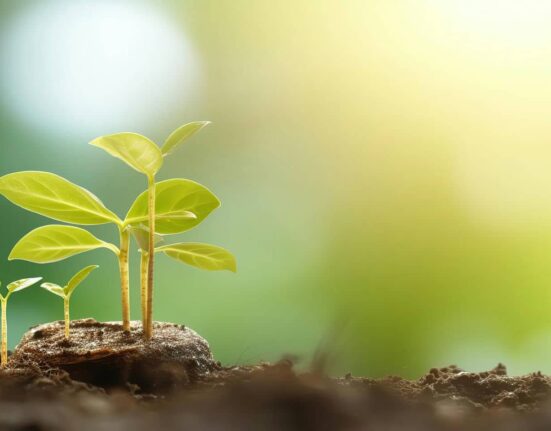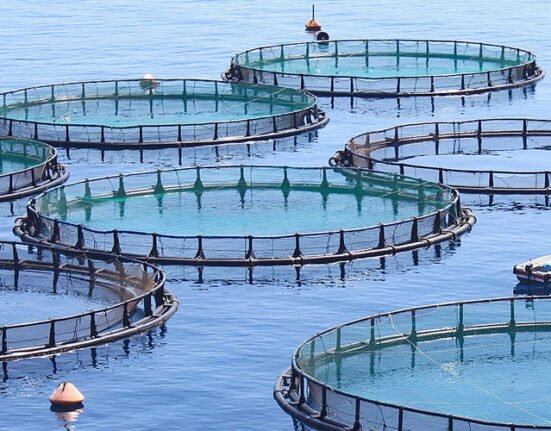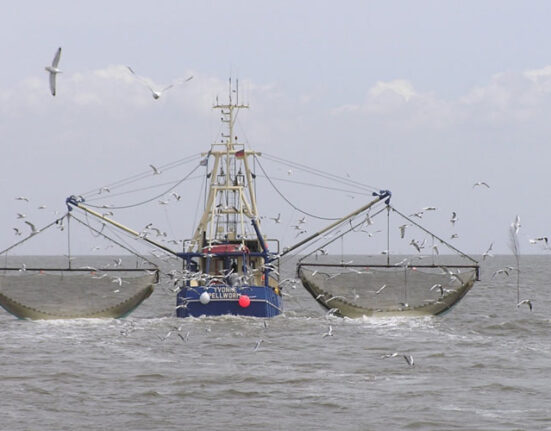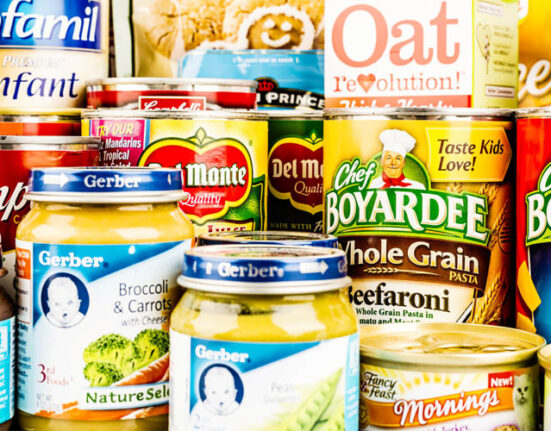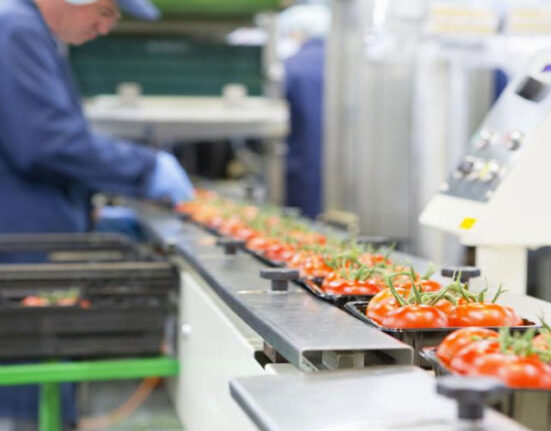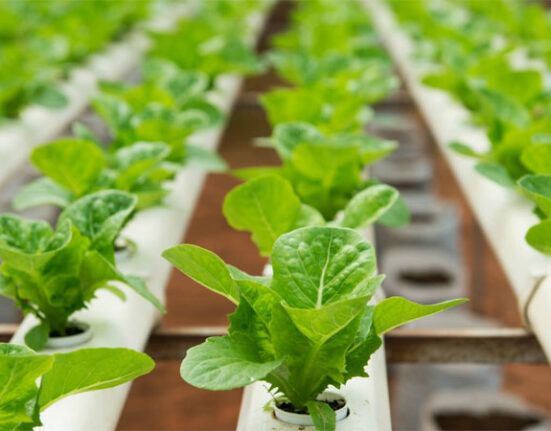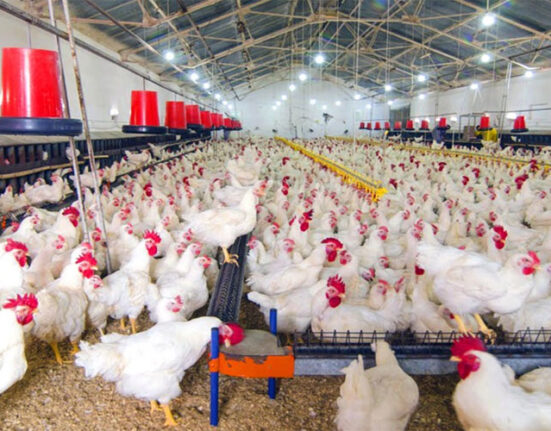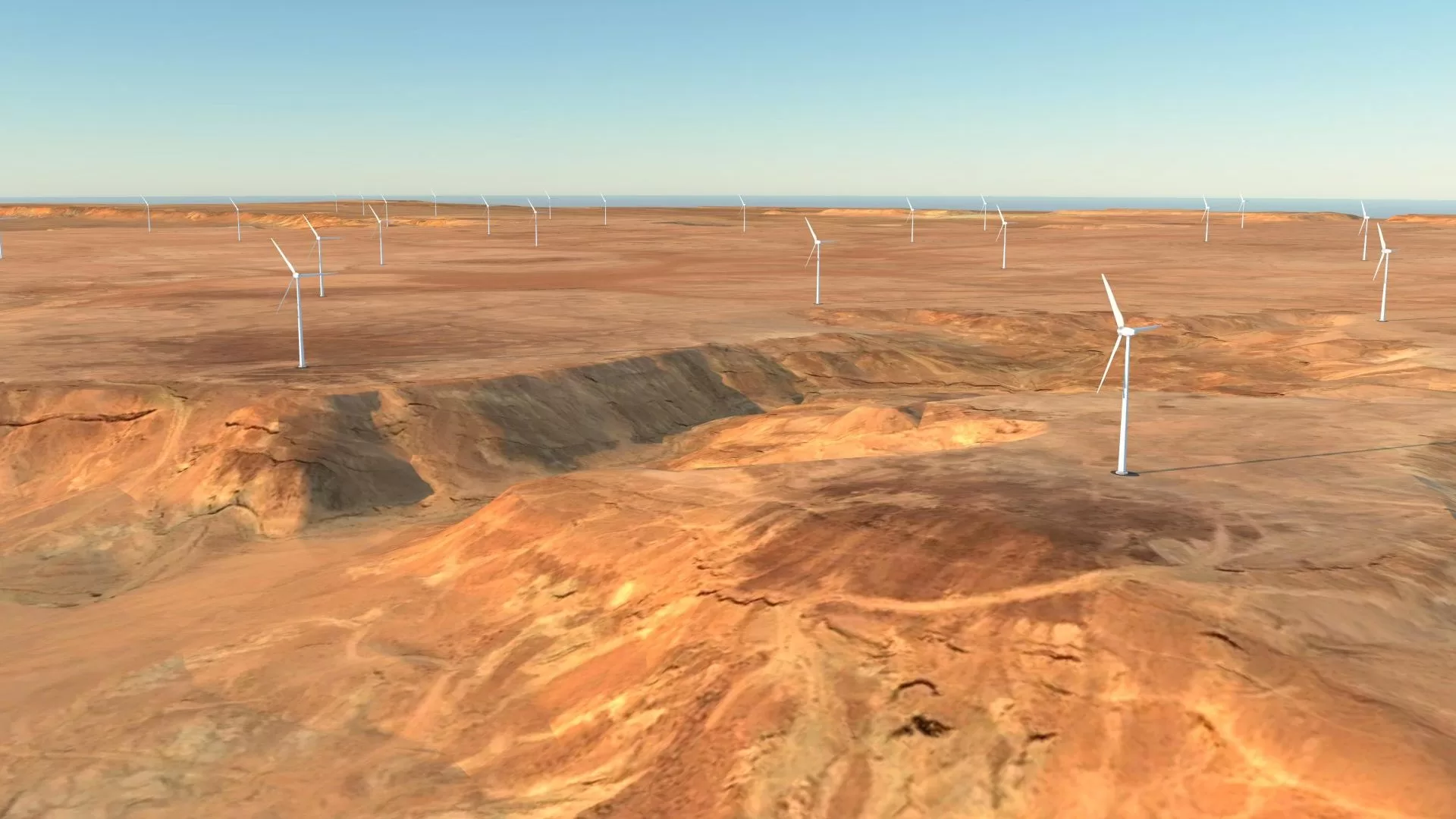In recent years, the Middle East has emerged as a significant player in renewable energy, embracing the potential of wind power to diversify its energy mix and reduce reliance on fossil fuels. Despite being synonymous with oil-rich landscapes, countries across the region are investing heavily in wind energy infrastructure, establishing some of the largest wind farms in the world. Here are the most notable wind projects in the Middle East.
Dumat Al Jandal Wind Farm, Saudi Arabia
The wind farm is located 900 kilometers north of Riyadh in the Al Jouf region of north-western Saudi Arabia. The project is 51 per cent owned by EDF Renewables and 49 per cent by Masdar.
Standing majestically in the northern deserts of Saudi Arabia, the Dumat Al Jandal Wind Farm is a true marvel of engineering. Boasting a capacity of 400 megawatts (MW), it is the largest wind farm in the Middle East. With 99 towering turbines supplied by GE Renewable Energy, this project is set to power around 70,000 homes and significantly reduce carbon emissions in the kingdom. The $500M USD project was commissioned by Saudi Aramco and delivered by the UAE’s Masdar and EDF from France.
Al Rajef Wind Farm, Jordan

Al Rajef Wind Farm
The Al Rajef Wind Farm is a testament to Jordan’s commitment to renewable energy. With a capacity of 117 MW, it comprises 34 turbines supplied by Vestas. Since its inauguration in 2019, it has been a vital contributor to Jordan’s efforts to diversify its energy mix and enhance energy security.
Al Marmoom Wind Farm, United Arab Emirates

Dubai, known for its skyscrapers and luxurious lifestyle, is also leading the charge towards sustainability with the Al Marmoom Wind Farm. This project, located in the expansive Al Marmoom desert, boasts a capacity of 100 MW. With 30 turbines supplied by Siemens Gamesa, it is a cornerstone of Dubai’s vision to become a global hub for clean energy.
Ma’an Wind Farm, Jordan

Ma’an Wind Farm
The Ma’an Wind Farm, situated in the Ma’an Governorate of southern Jordan, is another shining example of the region’s renewable energy ambitions. Operational since 2018, it has a capacity of 86 MW, comprising 27 turbines supplied by Vestas. This project underscores Jordan’s commitment to sustainable development and economic growth.
Gilboa Wind Farm, Israel

Gilboa Wind Farm
Israel, known for its innovation and technological prowess, is harnessing the power of the wind with the Gilboa Wind Farm. Located on the picturesque slopes of Mount Gilboa, this project is a beacon of Israel’s renewable energy aspirations. With a capacity of 169 MW, it is one of the largest wind farms in the country, contributing significantly to Israel’s clean energy goals and reducing its carbon footprint.
Tafila Wind Farm, Jordan:

Tafila wind farm
Located in the Tafilah Governorate of Jordan, the Tafila wind farm has been operational since 2015. With a capacity of 117 MW, it consists of 38 turbines supplied by Vestas. The Tafila Wind Farm plays a crucial role in Jordan’s efforts to reduce dependence on imported fossil fuels and meet its growing energy demands sustainably.
Alta’ir Wind Farm, Saudi Arabia:

Alta’ir Wind Farm, Saudi Arabia
Situated in the northwest of Saudi Arabia, the Alta’ir Wind Farm is one of the kingdom’s pioneering renewable energy projects. With a capacity of 50 MW, it comprises 16 turbines supplied by Vestas. Operational since 2020, the Alta’ir Wind Farm contributes to Saudi Arabia’s ambitious goals for renewable energy deployment and economic diversification.
Jbel Sendouq Wind Farm, Morocco:

The new Khalladi wind farm, which came into service in 2018, is located in Jbel Sendouq, 20 miles from the city of Tangier. With a capacity of 120 MW, it can supply energy to 400,000 people in Morocco.
While not geographically part of the Middle East, Morocco’s Jbel Sendouq Wind Farm (the Khalladi wind farm) is worth mentioning for its impact on renewable energy in North Africa. Situated near Tangier, this wind farm has a capacity of 115 MW, making it one of the largest in the region. Operational since 2020, it contributes significantly to Morocco’s renewable energy targets and efforts to mitigate climate change.
The wind farm was developed by ACWA Power in collaboration with ARIF investment fund, is the first private renewable energy project in the country. It has been developed under a renewable energy law that allows private producers to sell electricity directly to clients connected to the high voltage and medium voltage grid, mainly industrial companies.
Wind and the rest of the Middle East?
In recent news the UAE’s Masdar plans on building a wind farm in Bahrain. That soon will be added to the growing list.
Oman is planning the Harweel Wind Farm is a 199.4MW onshore wind power project. It is planned in Dhofar, Oman. According to GlobalData, who tracks and profiles over 170,000 power plants worldwide, the project is currently at the partially active stage.
Kuwait has 5 wind turbines installed: The Kuwait Institute for Scientific Research (KISR) has developed the innovative Shagaya Renewable Energy Project, which constitutes the first phase (Phase I) of an ambitious Master Plan to generate approximately 3.2GW at the Shagaya Renewable Energy Park.
Iran announced in 2023 that it will build wind farms of 3000MW. New sanctions for its support on terror will likely stall these ambitions. The Iranian regime is currently supporting terror groups such as the Houthis, Hezbollah and Hamas. New sanctions against them will stall growth in all sectors of its economy including renewables.
Despite being a global supplier of wind turbines, Vestas, the world’s number one wind turbine maker, said it swung to a 75-million-euro ($80-million) loss in the first quarter of this and warned “geopolitical volatility” would continue to cause uncertainty. Revenue fell 5.2 percent to 2.68 billion euros in the first three months of the year, compared to the same period a year earlier. Its net loss followed a net profit of 16 million euros in the first quarter of 2023.
Who are the leading wind turbine manufacturers?
Vestas, Siemens Gamesa, Goldwind, Nordex and Enercon.


